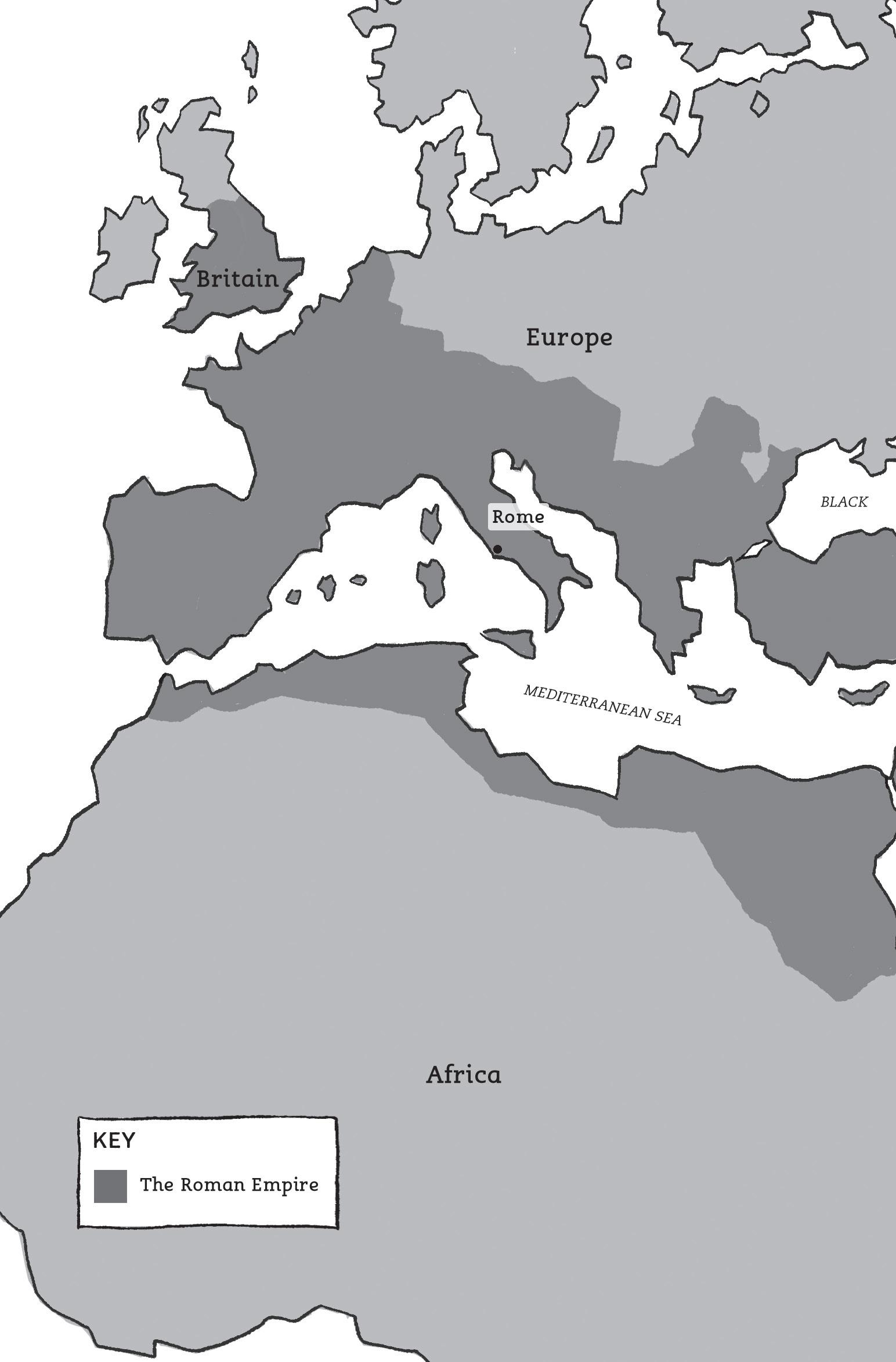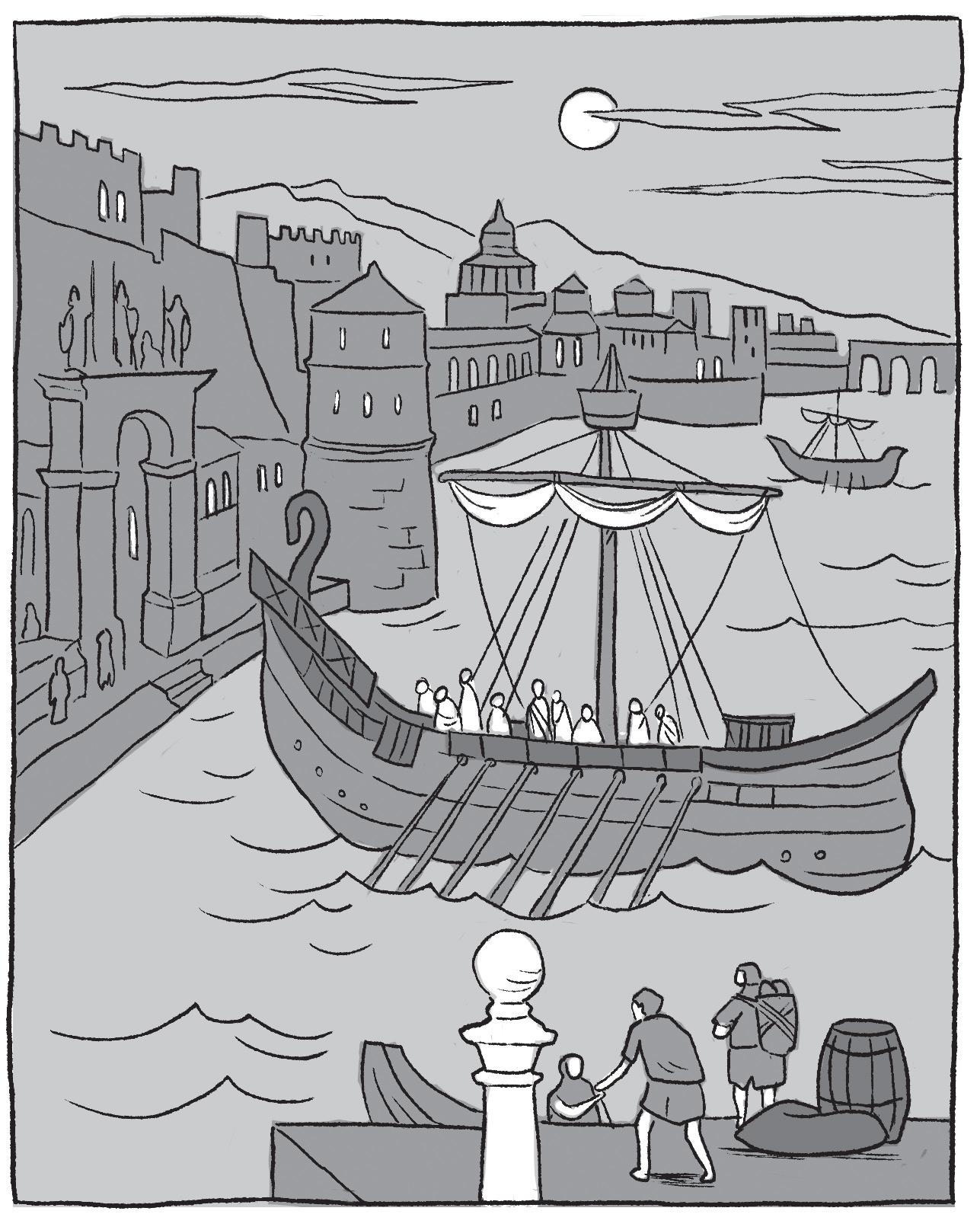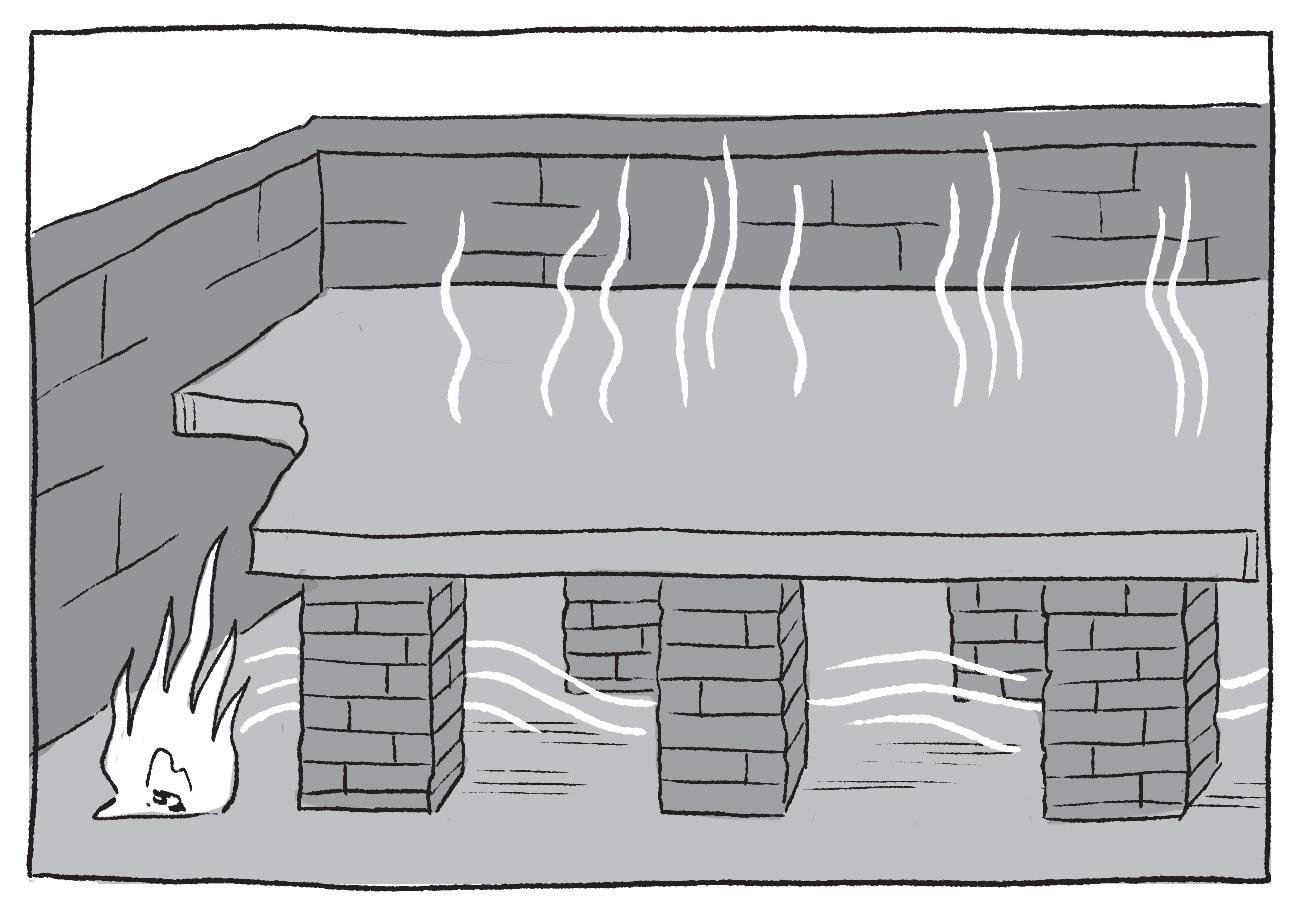


Published by Barrington Stoke
An imprint of HarperCollinsPublishers
Westerhill Road, Bishopbriggs, Glasgow, G64 2QT
www.barringtonstoke.co.uk
HarperCollinsPublishers
Macken House, 39/40 Mayor Street Upper, Dublin 1, DO1 C9W8, Ireland
First published in 2023
Text © 2023 David Long
Illustrations © 2023 Stefano Tambellini
Cover design © 2023 HarperCollinsPublishers Limited
The moral right of David Long and Stefano Tambellini to be identified as the author and illustrator of this work has been asserted in accordance with the Copyright, Designs and Patents Act, 1988
ISBN 978-1-80090-213-8
10 9 8 7 6 5 4 3 2 1
All rights reserved. No part of this publication may be reproduced, stored in a retrieval system, or transmitted, in whole or in any part in any form or by any means, electronic, mechanical, photocopying, recording or otherwise without the prior permission in writing of the publisher and copyright owners.
The contents of this publication are believed correct at the time of printing. Nevertheless the publisher can accept no responsibility for errors or omissions, changes in the detail given or for any expense or loss thereby caused.
A catalogue record for this book is available from the British Library.
Printed at Pureprint, a Carbon Neutral® printer
to ensure responsible forest management.
For more information visit: www.harpercollins.co.uk/green
For the young Roman girl who lies beneath St Mary Axe

1. THE GREAT INVADERS 1 Who Were the Romans? 2. STREETS AND SQUARES 10 Life in a Roman Town 3. BLOODSHED AND BATH HOUSES 25 Public Entertainment 4. HARD WORK, RICH HARVESTS 35 Life in the Countryside 5. THE EMPEROR OF EVERYTHING 46 Who Ruled Rome? 6. ALWAYS ON THE MARCH 54 The Finest Army of Its Age 7. A MISSION TO CIVILISE THE WORLD 63 Architects, Builders and Engineers 8. TOO MANY GODS TO COUNT 75 Romans and Their Religion 9. THE BEGINNING OF THE END 86 The Empire Starts to Break Apart 10. A LASTING LEGACY 94 What Did the Romans Do for Us?
CONTENTS
THE GREAT INVADERS

Who Were the Romans?
More than 2,000 years ago, the Romans ruled one of the largest empires the world had ever seen. Their armies conquered vast areas of Europe, Africa and Asia. This meant that the Roman Empire stretched from England all the way to Turkey, and across the Mediterranean Sea to Egypt and t he coast of North Africa.
More than a fifth of all the people on Earth at that time lived in the Roman Empire. The empire lasted for hundreds and hundreds of years, despite many attempts to defeat the Romans in battle.
1


The Roman Empire in 117 ce
The creation of such a vast empire was impressive considering that the Romans started out as just a small, warlike tribe. They lived in a village called Rome in what is now Italy. Rome had been founded in around 750 bce by brothers called Romulus and Remus, according to ancient legend. Romulus and Remus were twins, and the legend said that they had grown up in the wild, fed and protected by a gigantic wolf.
The village of Rome began as a group of stone huts on a hilltop. It went on to become

4 THE GREAT INVADERS
the largest and most important city in the world at the height of the empire, with a population of more than a million.
Rome was home to many powerful emperors who ruled over everyone living in the empire. Some of these emperors were good to their people and treated them well, but others were greedy and cruel. A few emperors were very bad indeed, and one of them was only 13 years old.
Rome’s original hilltop location made it easier to defend against attacks from rival tribes. As more and more people moved to Rome to live, other groups of huts were built across six nearby hills overlooking the River Tiber. The Tiber was important because it flowed straight into the sea only 25 kilometres away. The river meant the Romans could grow rich by sending wooden ships called galleys
THE GREAT INVADERS 5
to trade with other countries around the Mediterranean. Later, the river also made it possible to invade many of those countries

6 THE GREAT INVADERS
by sending warships full of soldiers down the river and across the sea.
It took the Romans several centuries to build such a large empire, even with the advantages of the hilltops and the river. It involved more than just wooden ships and winning battles. The soldiers of the Roman army built an amazing 80,000 kilometres of new roads when they weren’t fighting. Incredibly, some of these are still in use today.
Roman architects and engineers also constructed hundreds of new towns and cities along these roads, many of them in the countries the army had invaded. These had beautiful temples and other spectacular buildings made of brick and stone.
The families living in these towns and cities could enjoy things many of them had never seen before. These included clean water supplies, theatres and large sports arenas,
THE GREAT INVADERS 7
impressive public bath houses. They even had homes with central heating, which worked by blowing smoke into the walls and beneath the floors.

The Romans spoke a language called Latin, and they introduced new ways of counting and writing. They had a calendar that was similar to the one most people use today. They were responsible for many brilliant inventions, such as newspapers, books, concrete, surgeon’s tools
8 THE GREAT INVADERS
and even an efficient postal system. These helped to improve the lives of many people living in the empire.
Slavery wasn’t invented by the Romans, but several million men and women in the empire were enslaved, along with tens of thousands of young children. Most ancient societies had their own version of slavery, and unfortunately it was regarded as a normal part of life for thousands of years. Enslaved people had to work hard from early morning to late at night. But at least, under the Romans, it was possible for them to earn their freedom. Many did this, and a few even went on to become very rich with large houses and slaves of their own.
THE GREAT INVADERS 9










